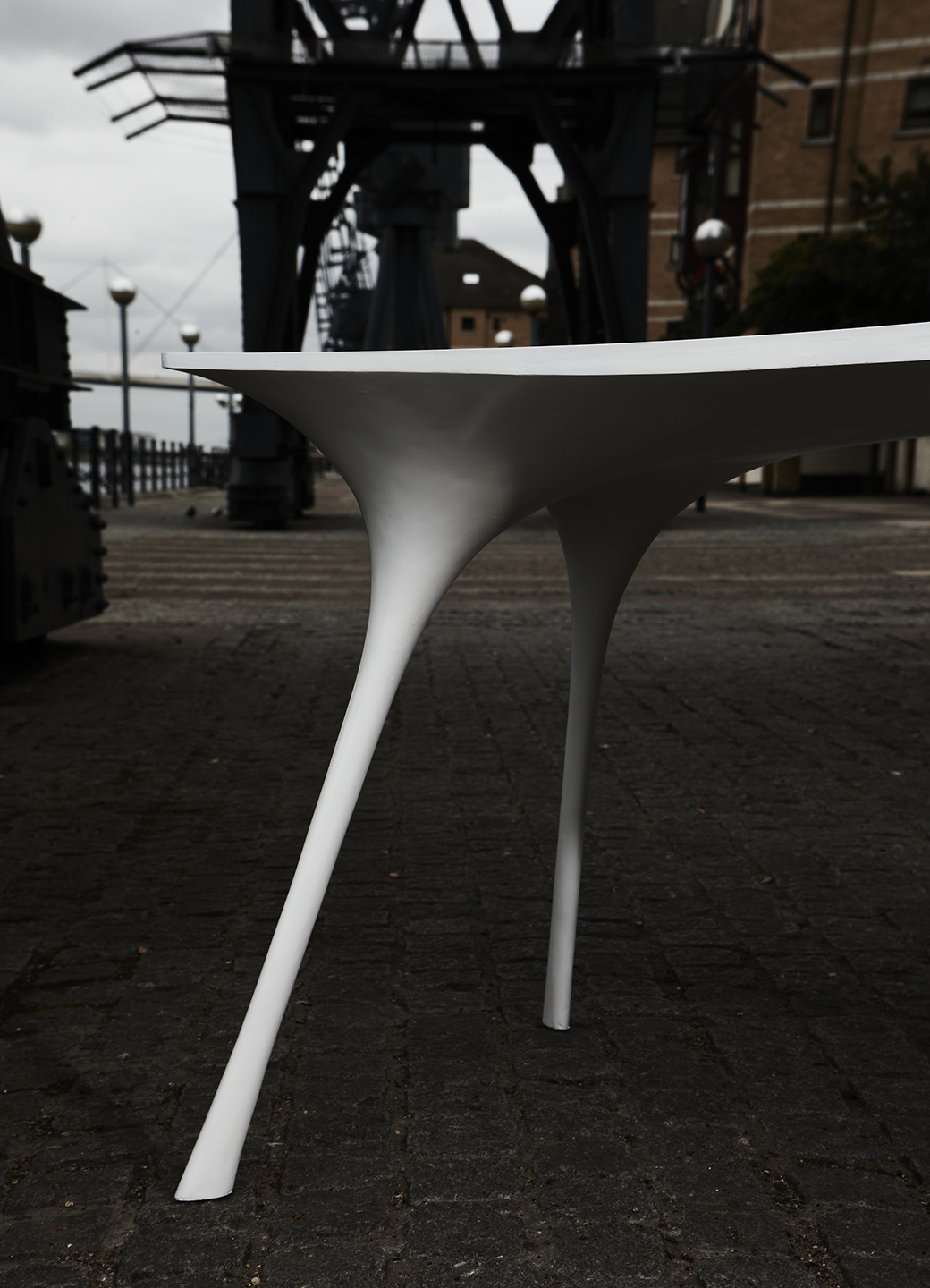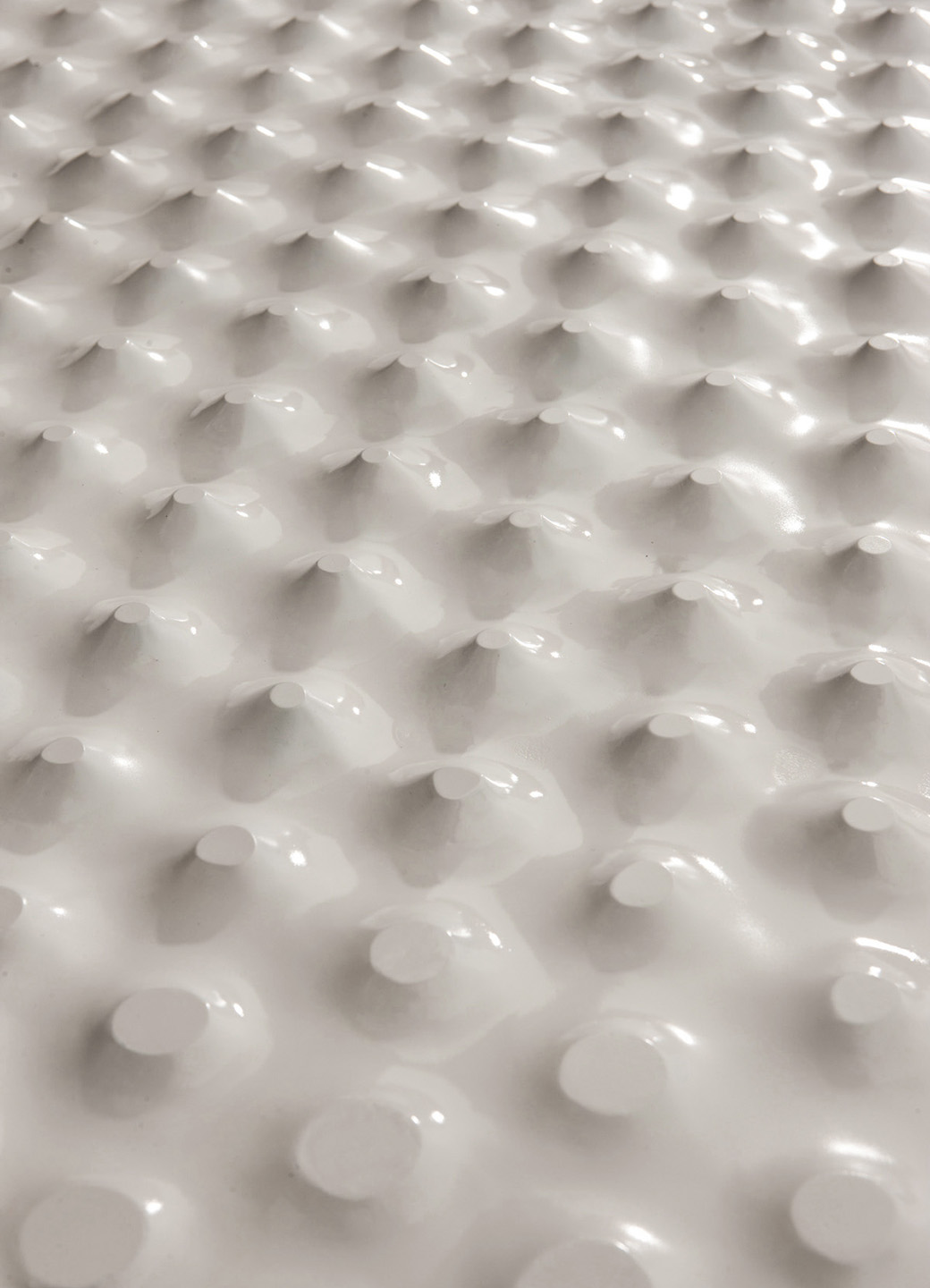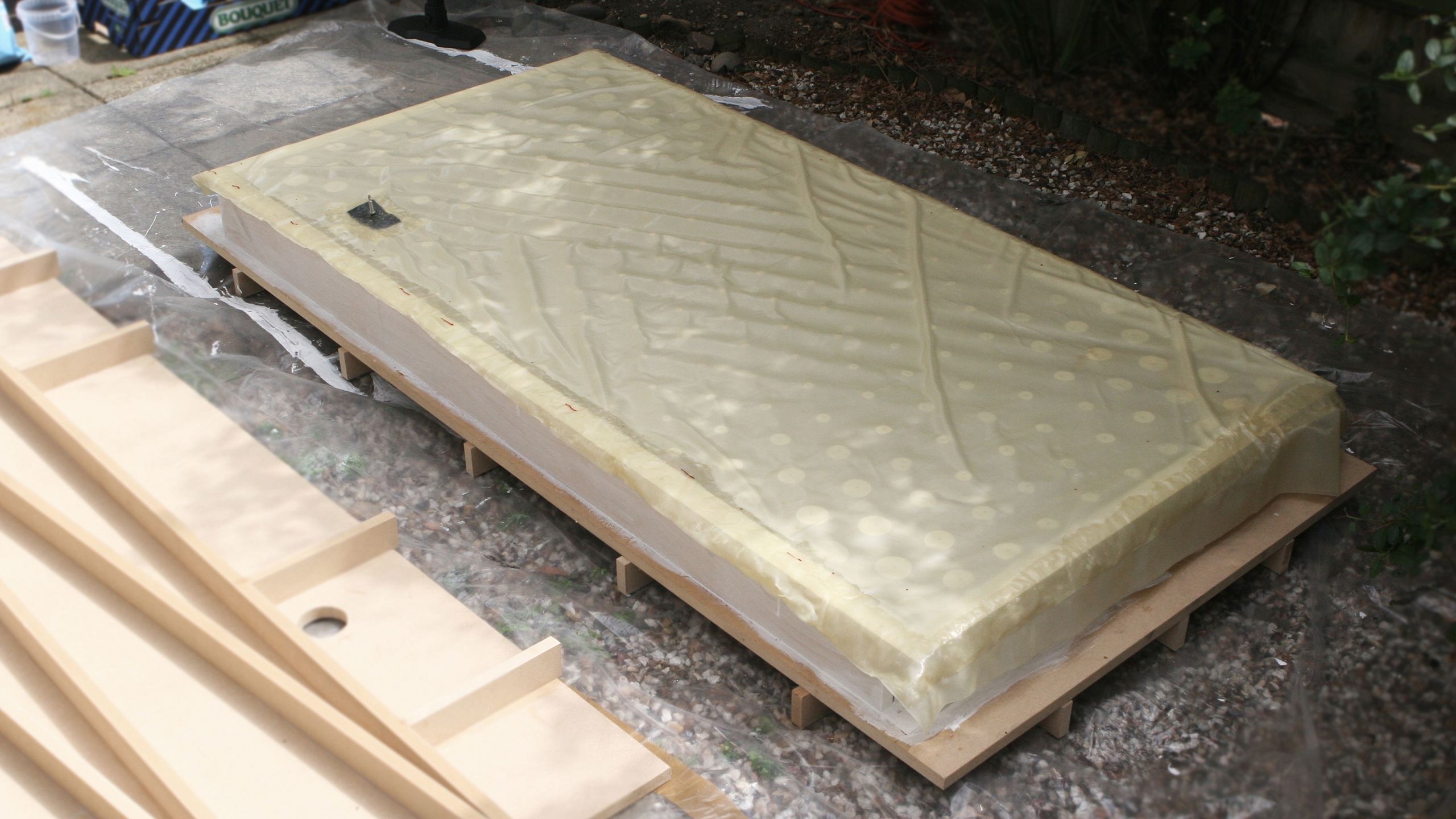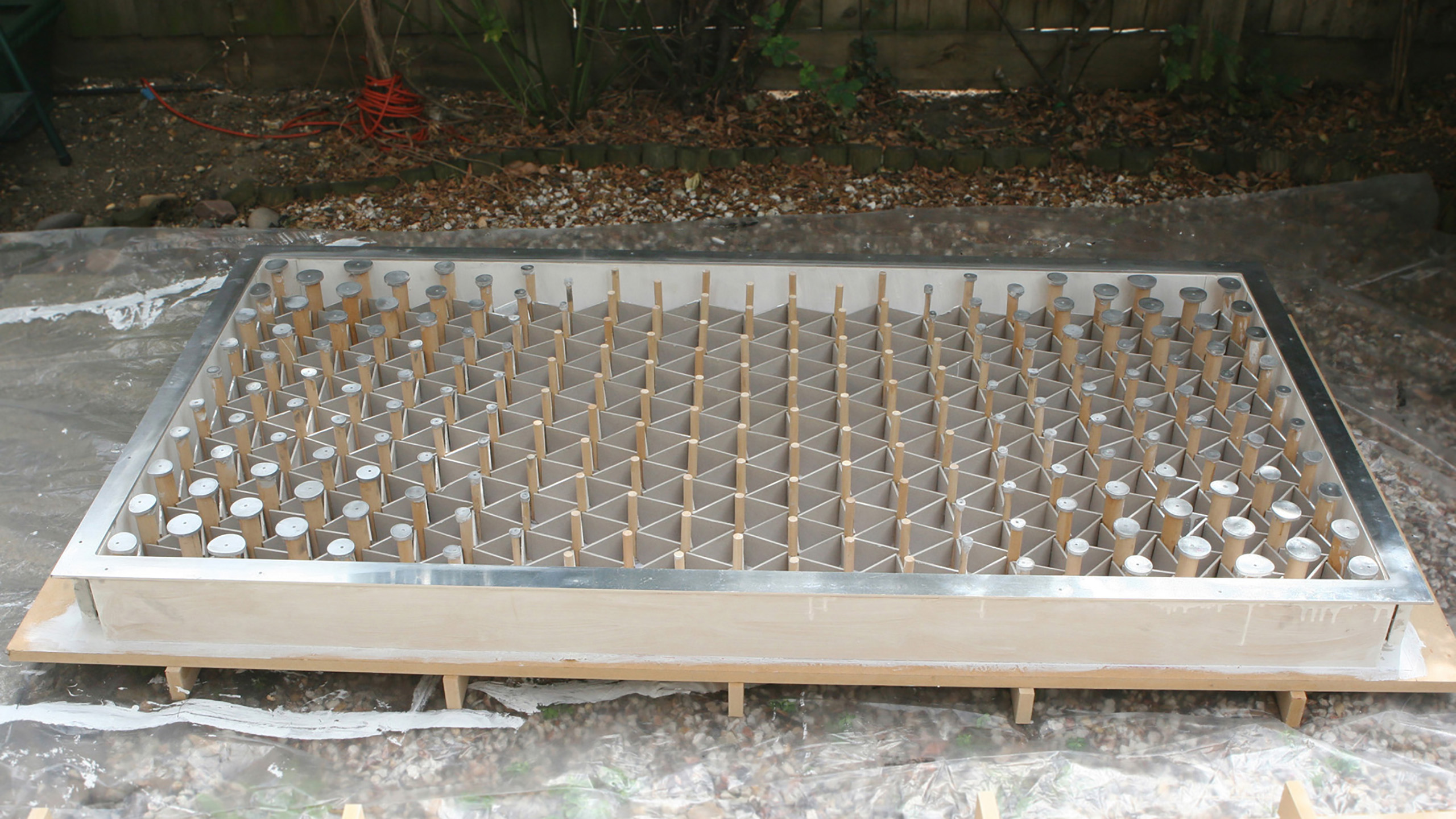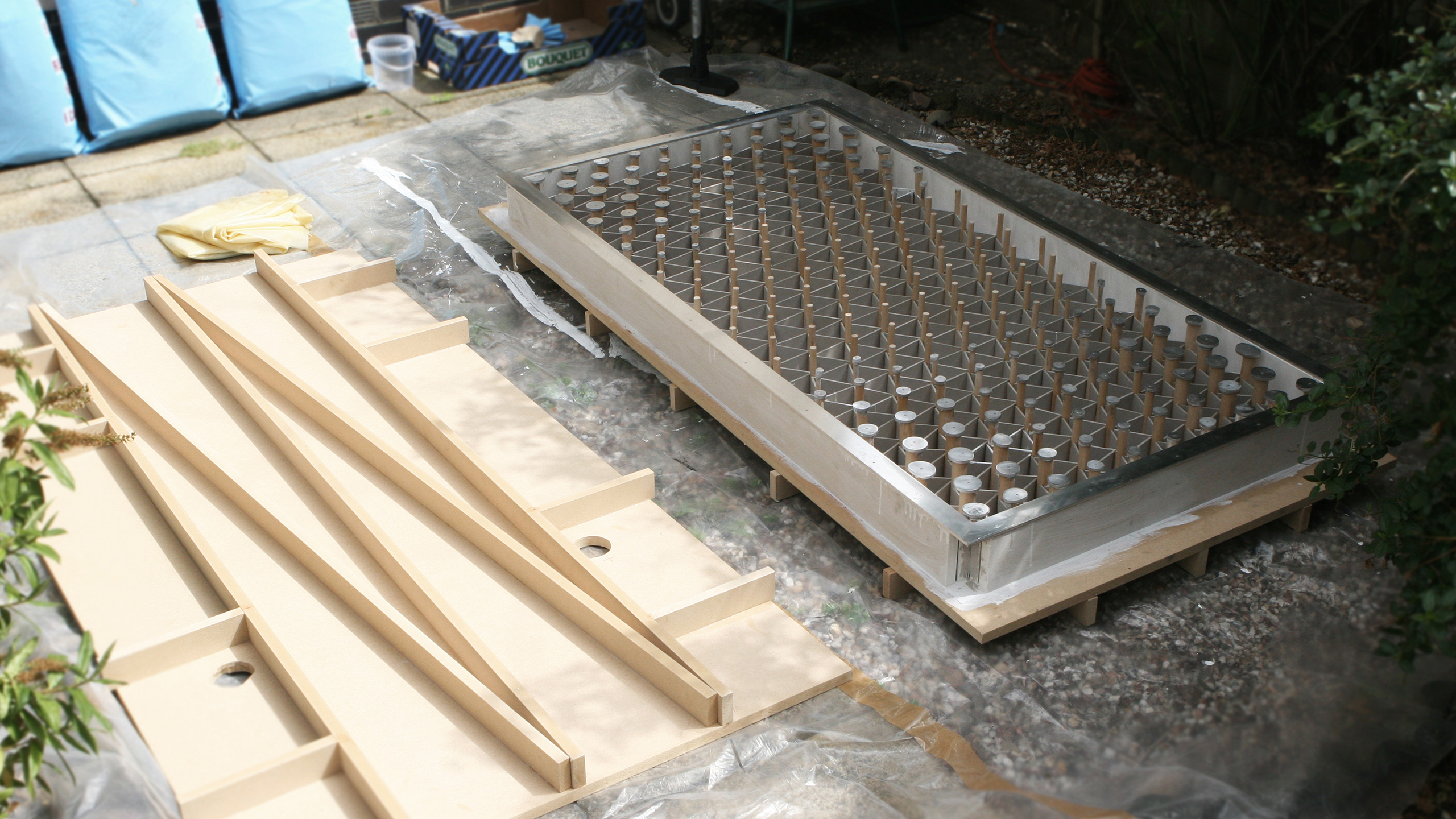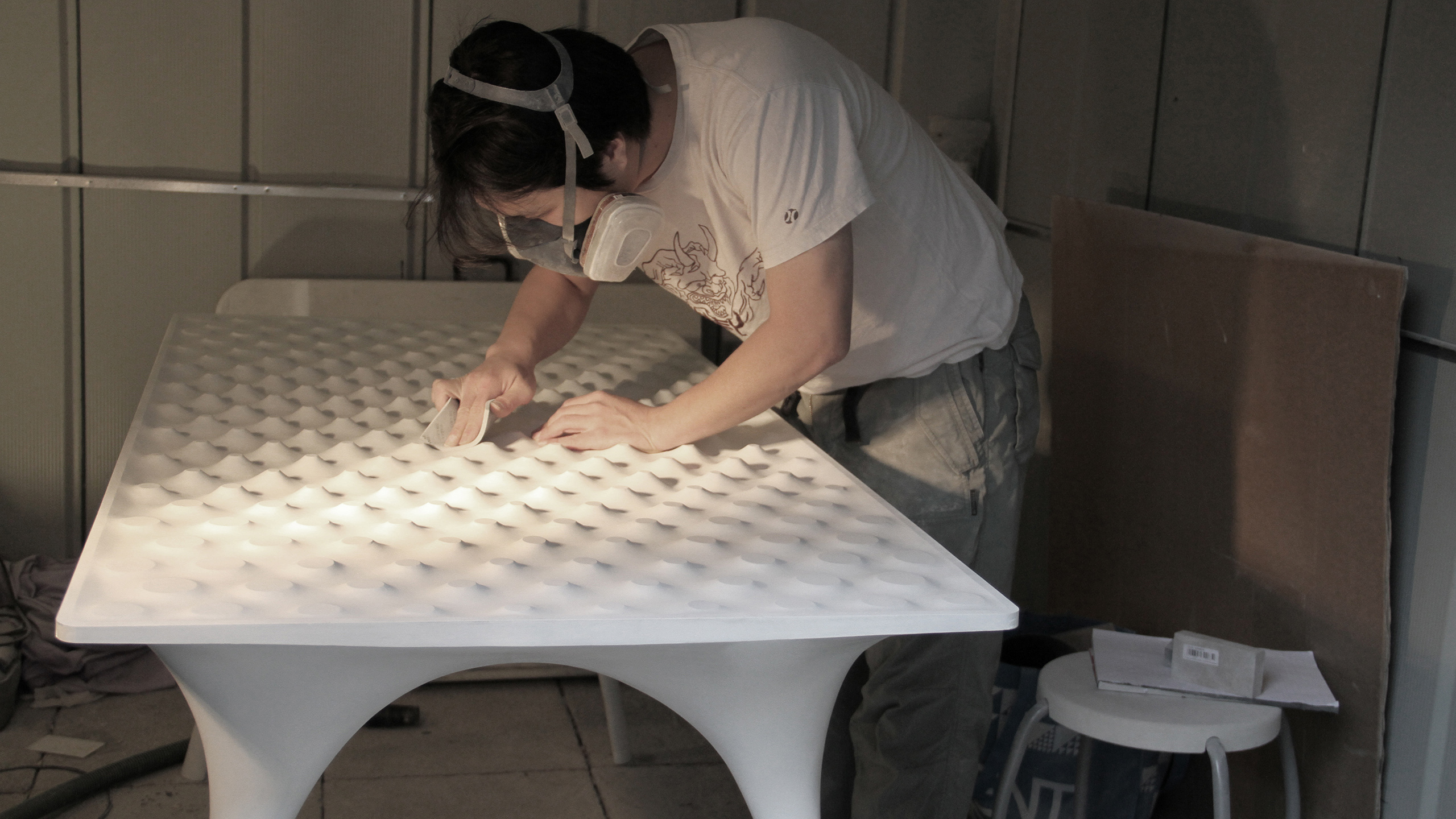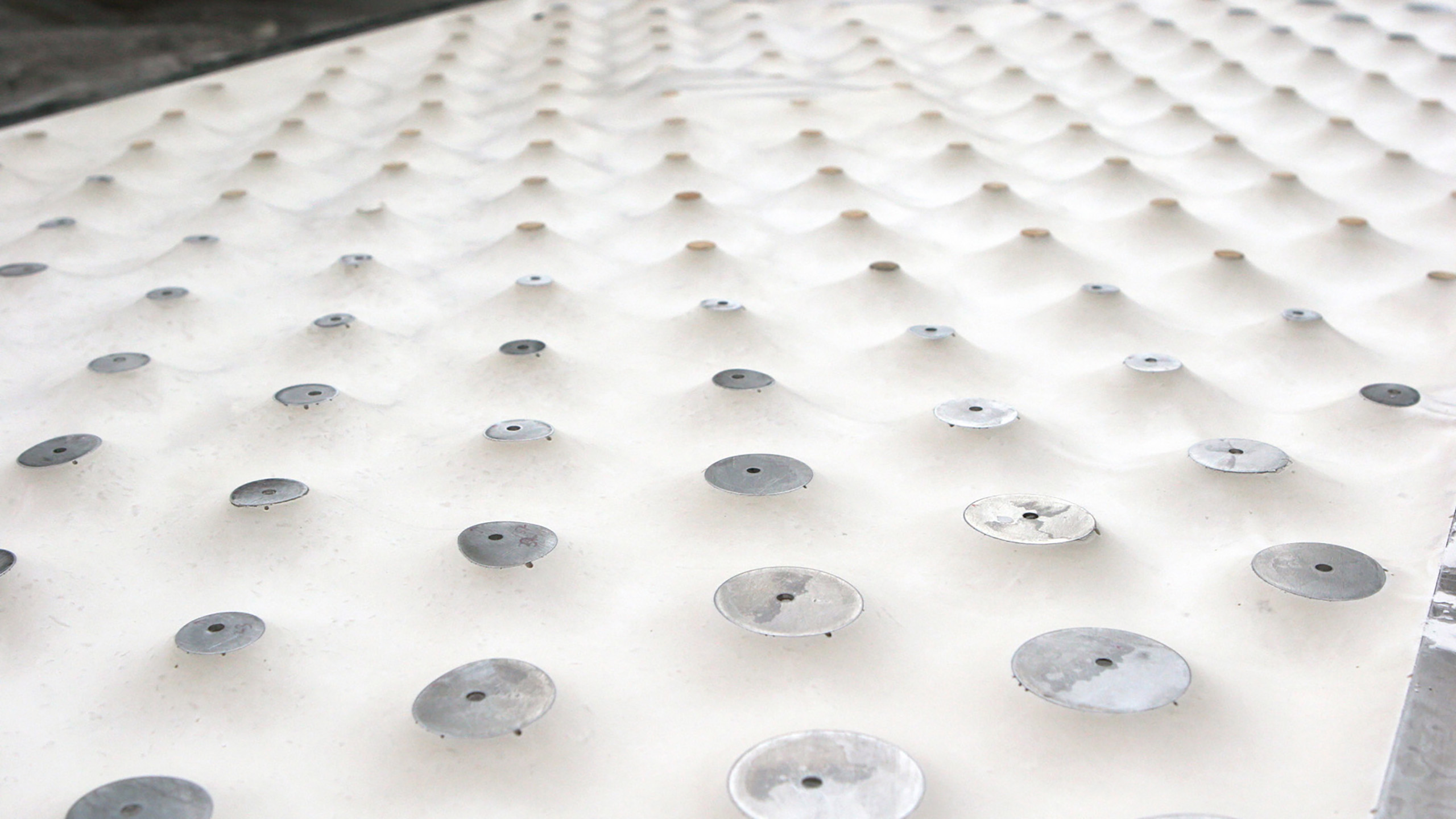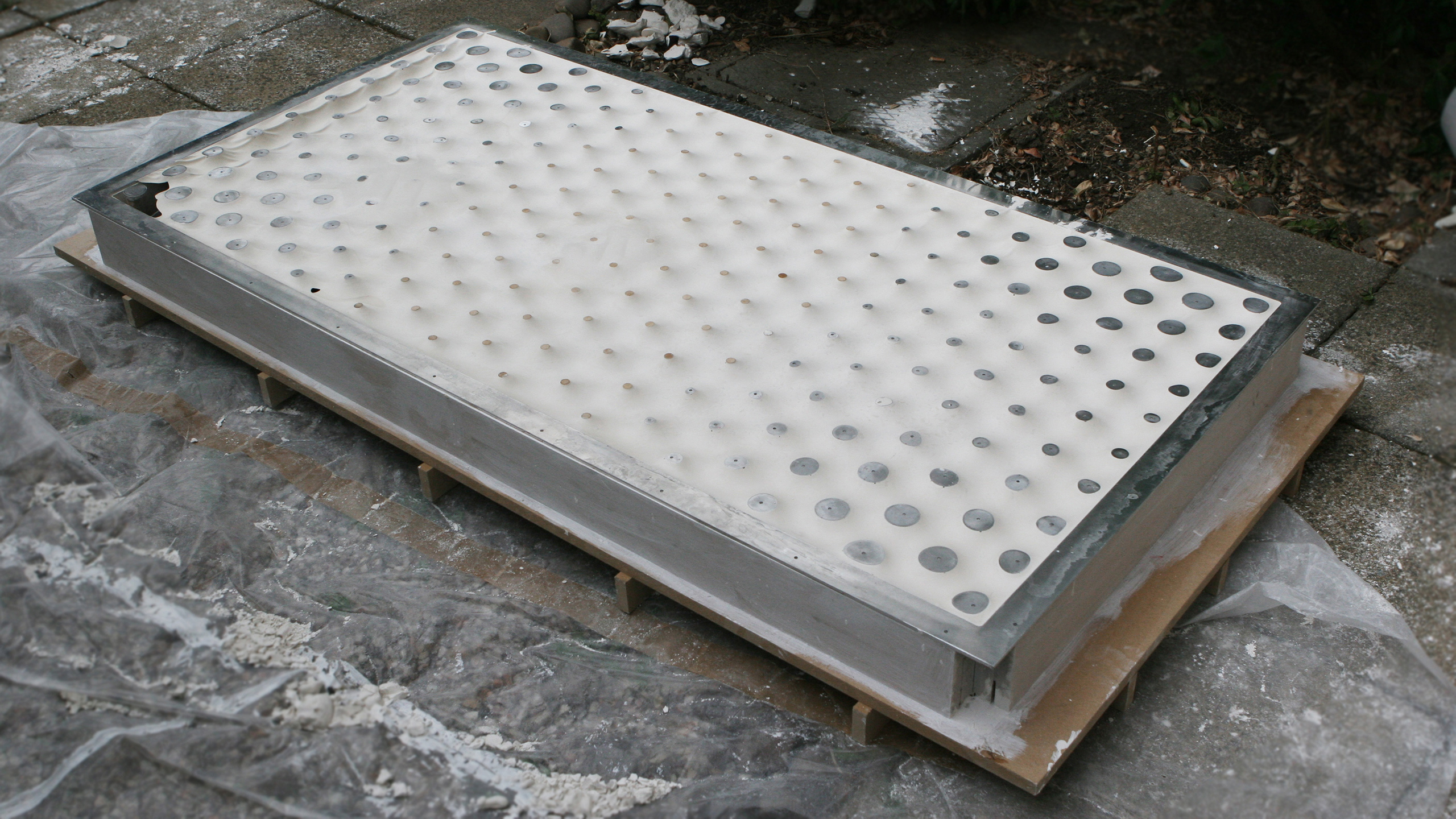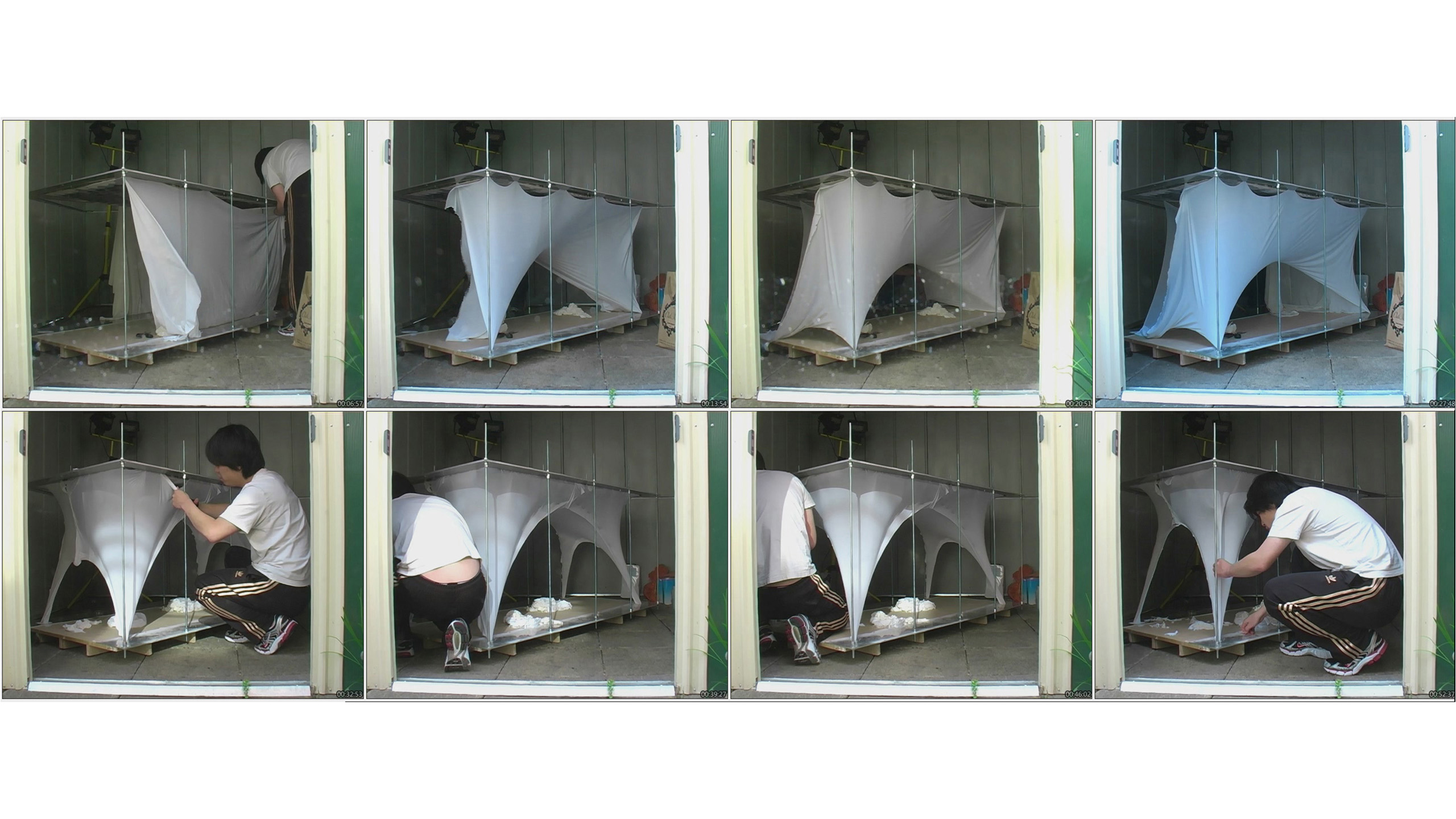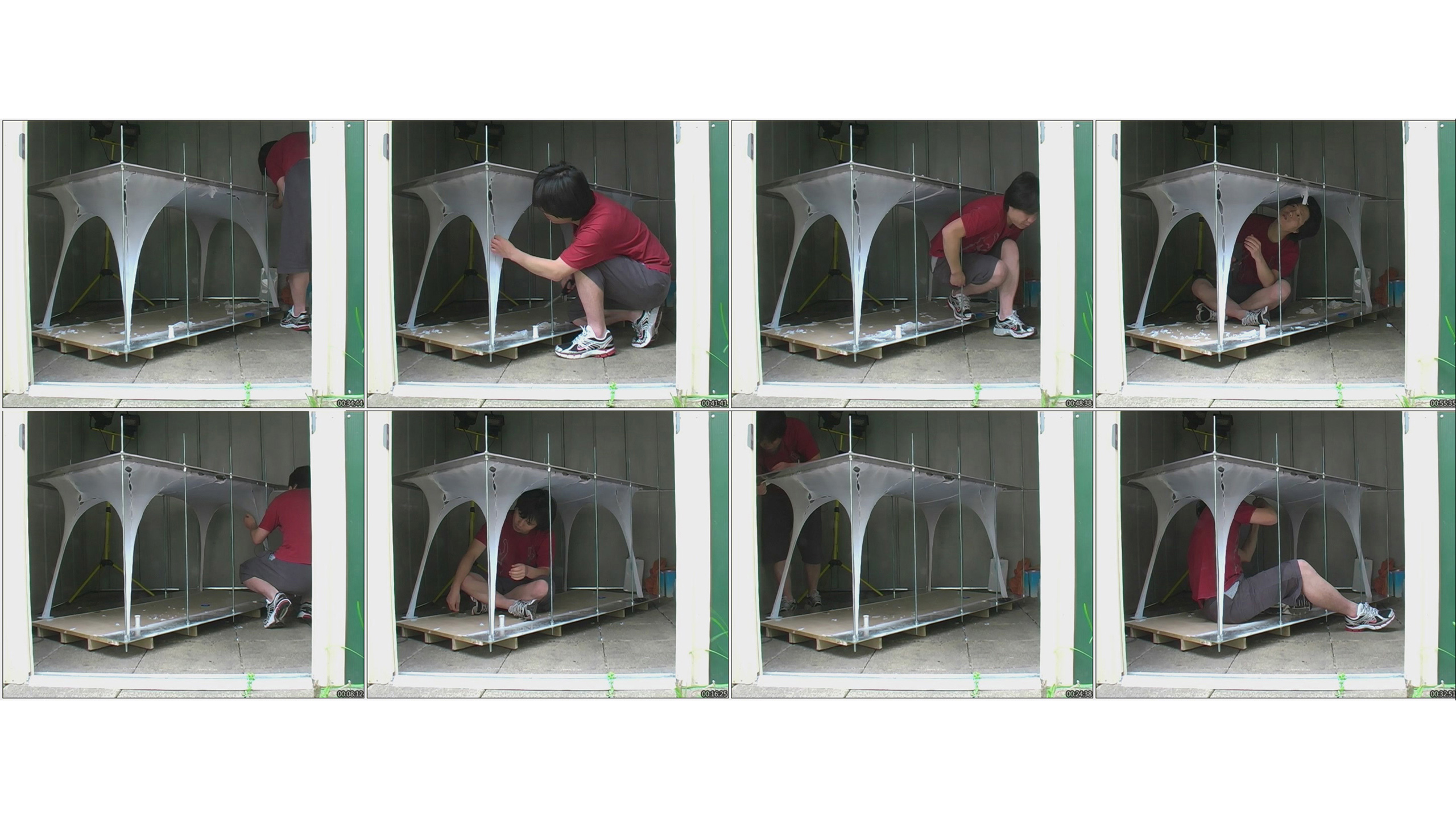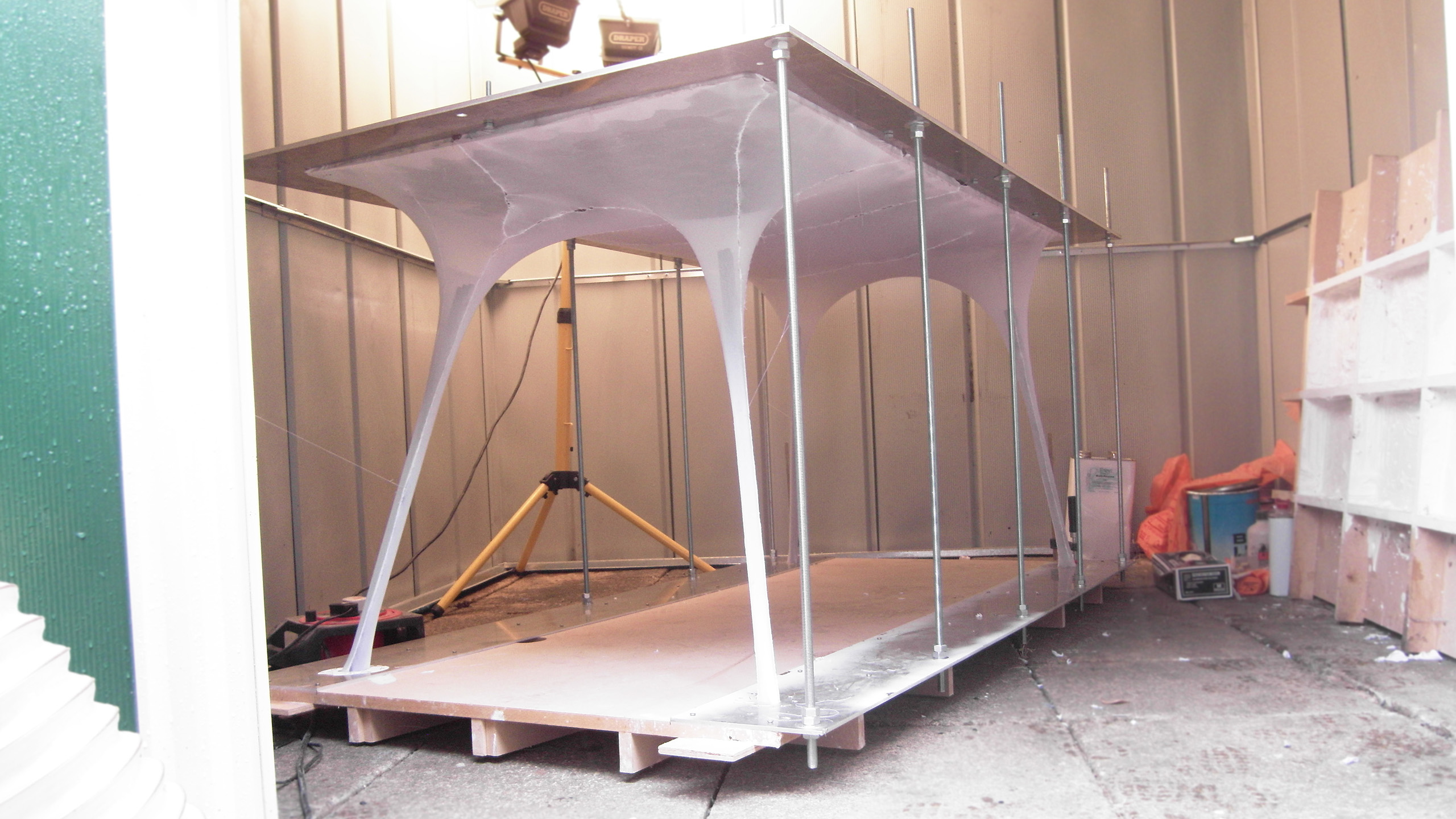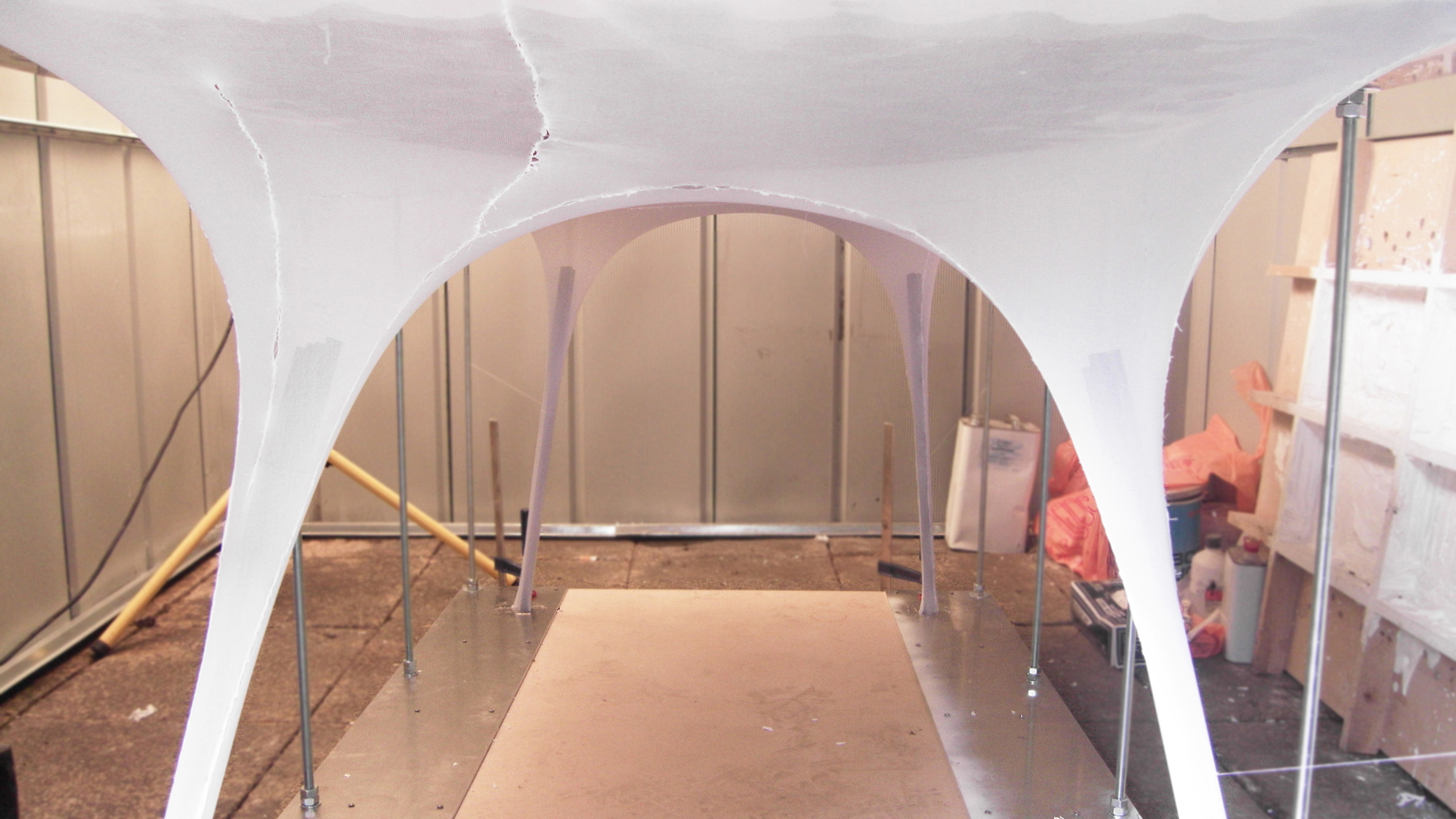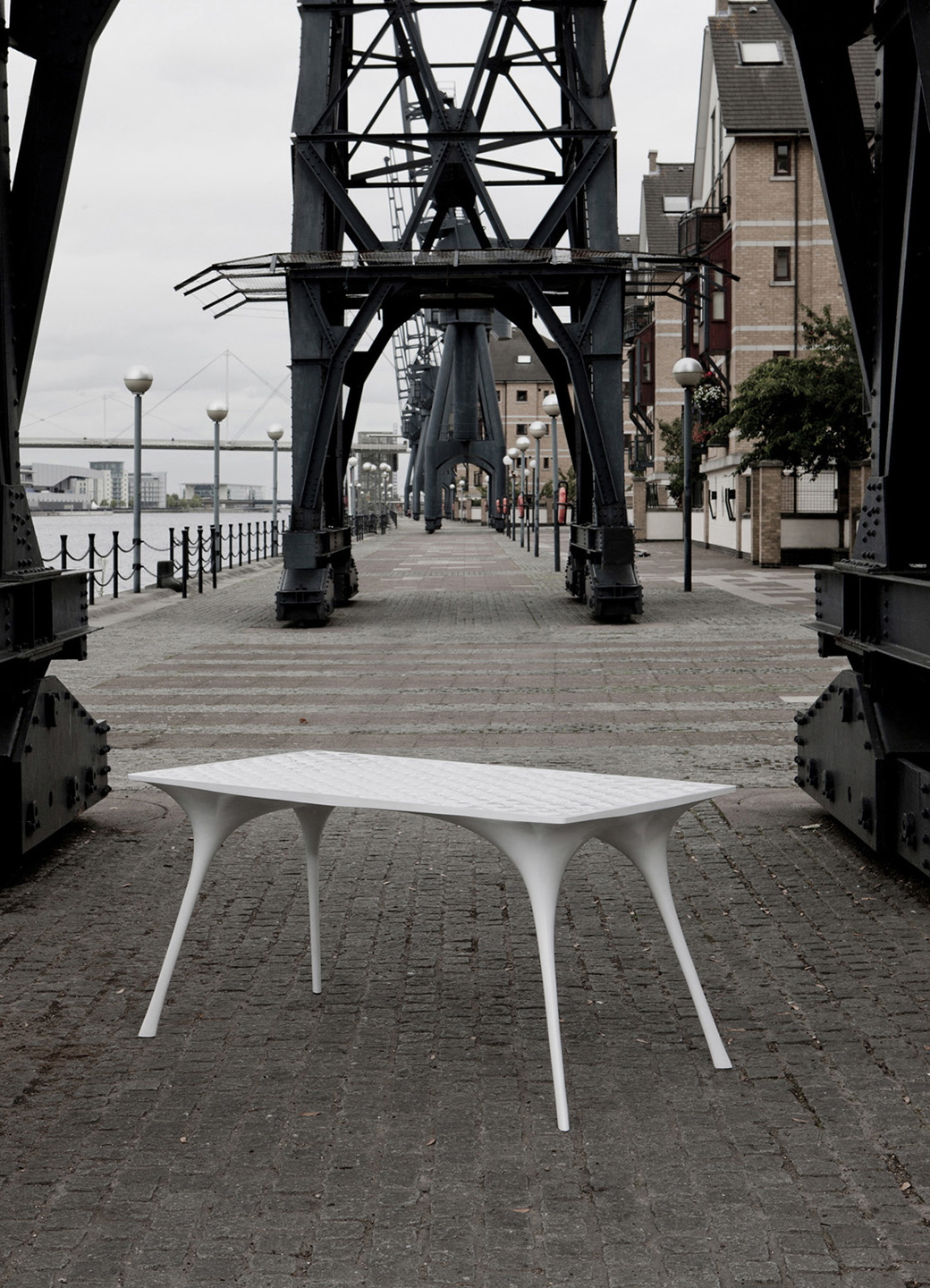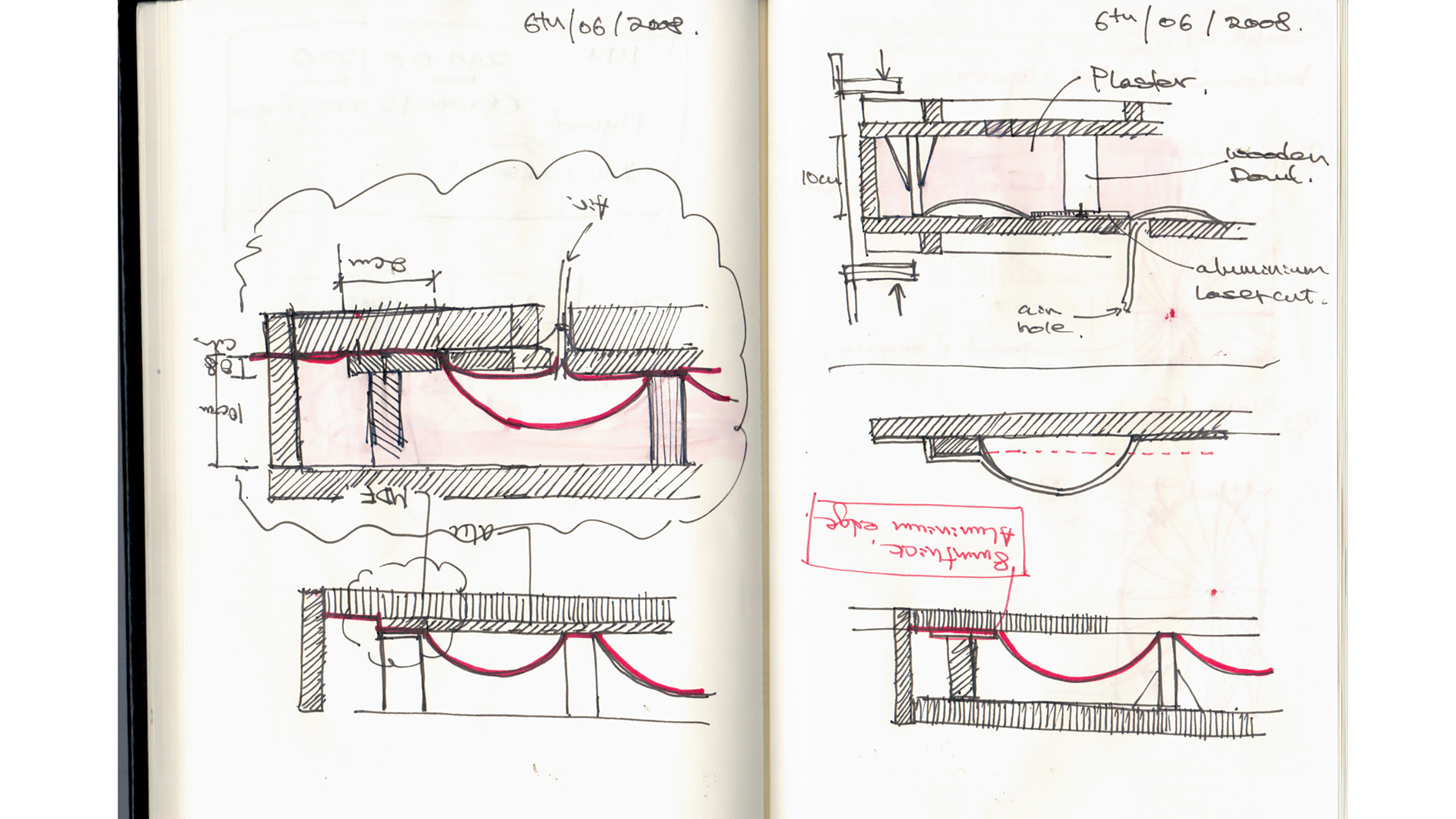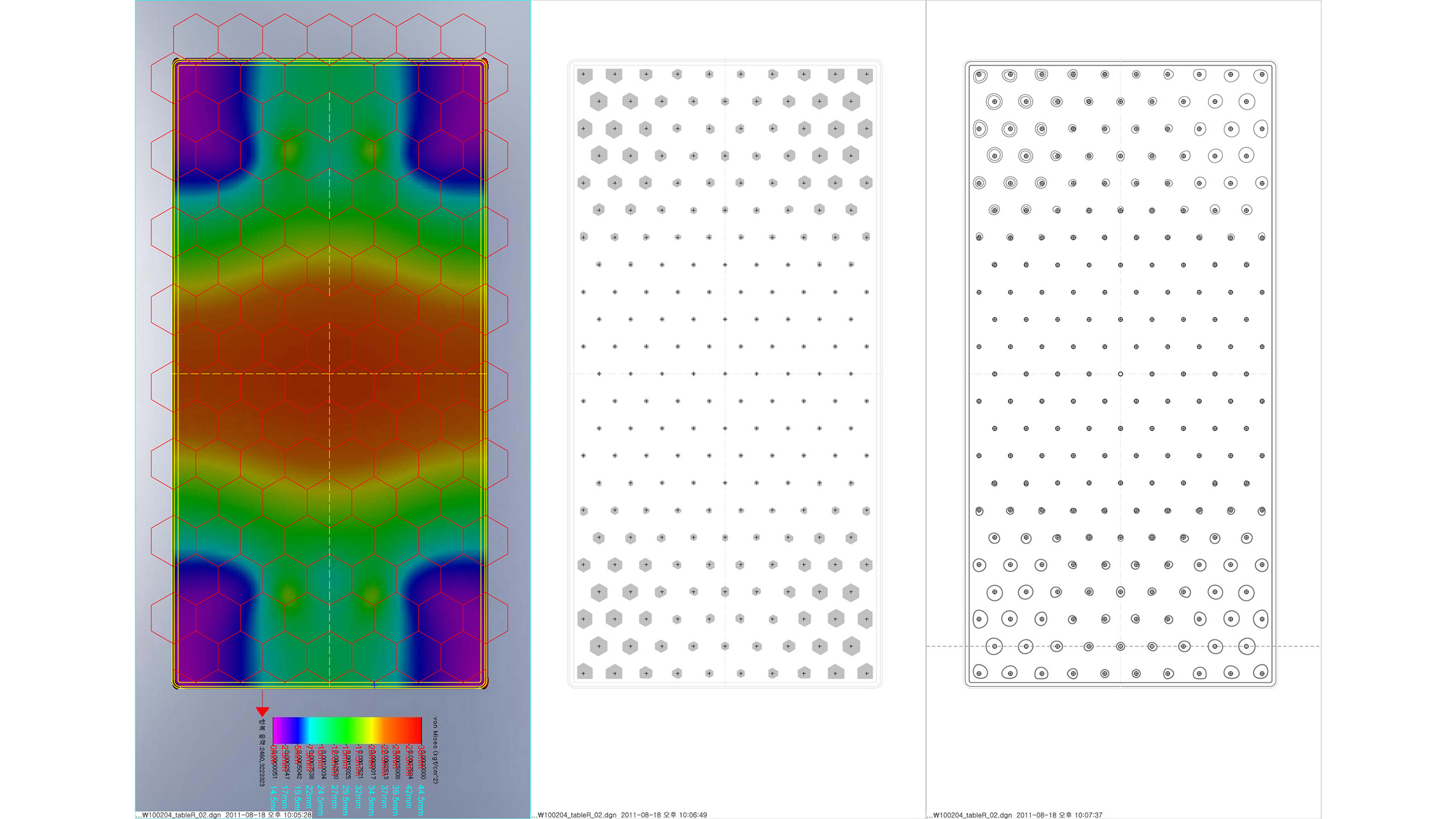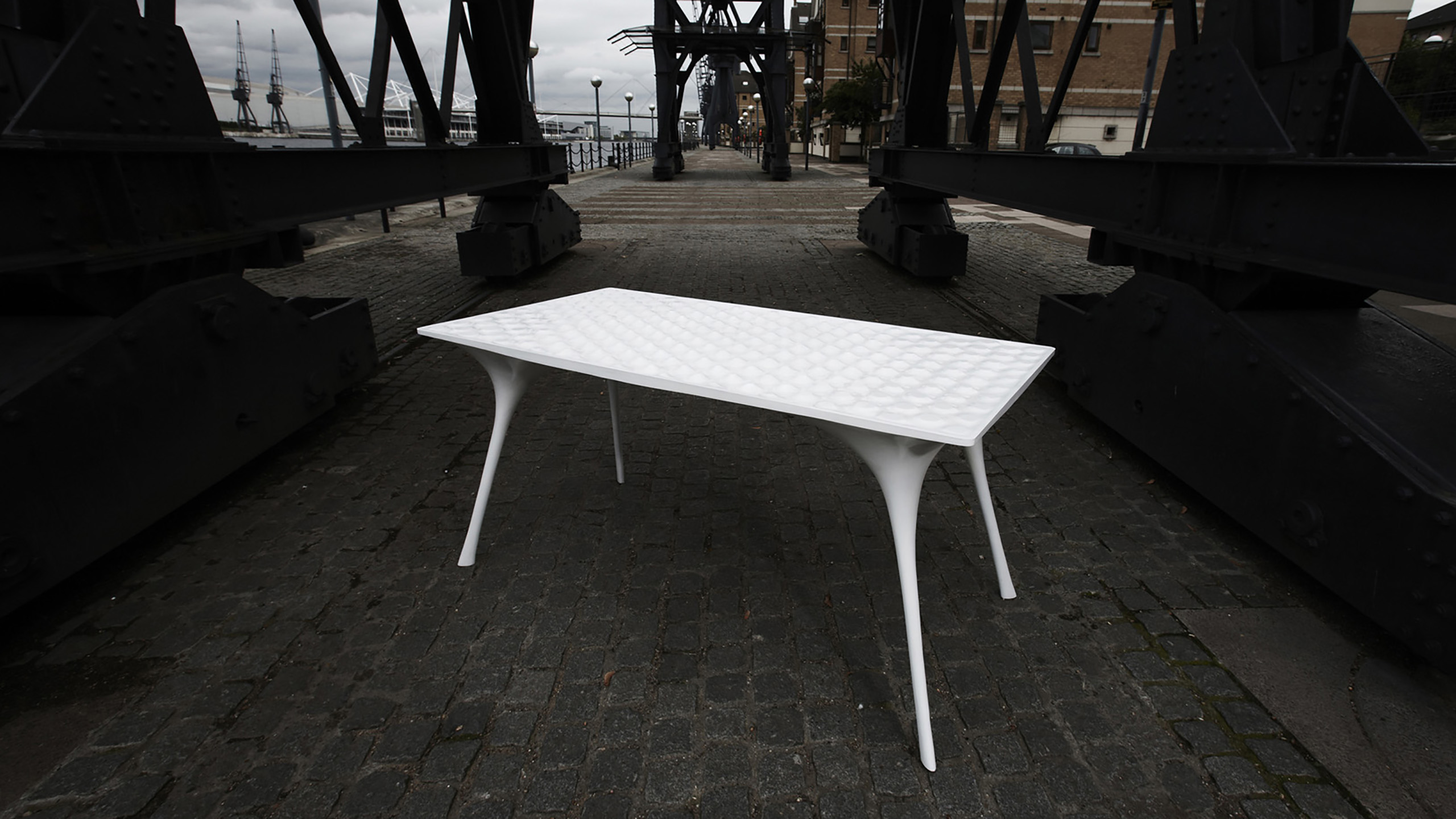
Table, GRP (Fibre Glass Reinforced Plastic), L160cm x W80cm x H74cm, 2011
This handmade architectural sculpture Pneu (Pneumatic) Table is a project that was showcased for the Aram Gallery London exhibition in September 2011 and has taken the artist nearly three years to complete.
The artist’s main purpose for this project was to develop a method to combine two different types of self form-finding structures. The artist began researching pneumatic structures that are found in nature such as bubbles and DNA strands. Then he sought to find a way to naturally combine the results of his previous investigations on fabric stretching Radiolaria series in order to form an integrated hybrid structure.
Architect and engineer Frei Otto has stated that different families of self-form finding structures can be grouped together to form hybrid structures. The Pneu Table was an experiment to see how Otto’s hypothesis may apply to architectural sculpture that was modelled after self form-finding structures found in the natural world.
The Pneu Table project was developed in two key stages. The first stage was utilising structural analysis software to see and analyse the structural pattern of pneumatic structures found in the natural world. The artist then used the information generated to carry out an experiment by inflating balloons, which later became the top surface of the table. The second stage was to create the legs by using the fabric stretching technique from Radiolaria. The results of the two experiments were combined together to create the Pneu table.
Combining these two investigations generated a sculpture with unique patterns which successfully illustrated how two separate self form-finding processes can be utilised in a single structure, and how such a hybrid structure benefits the design both structurally and esthetically.
New findings derived from the experiments carried out for the Pneu Table have also heavily influenced the design and creation of artist’s other projects, including the Table R EX07.
